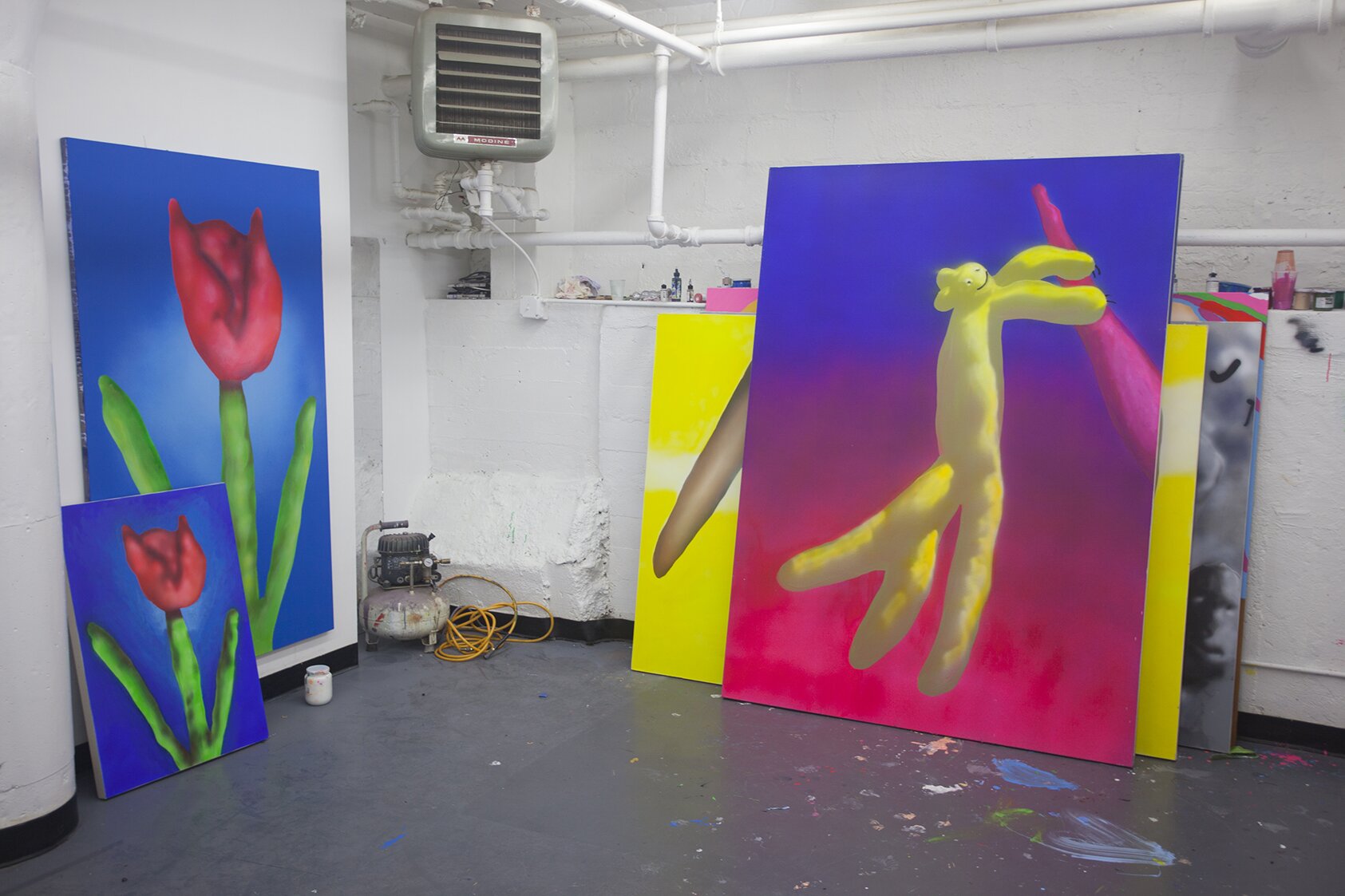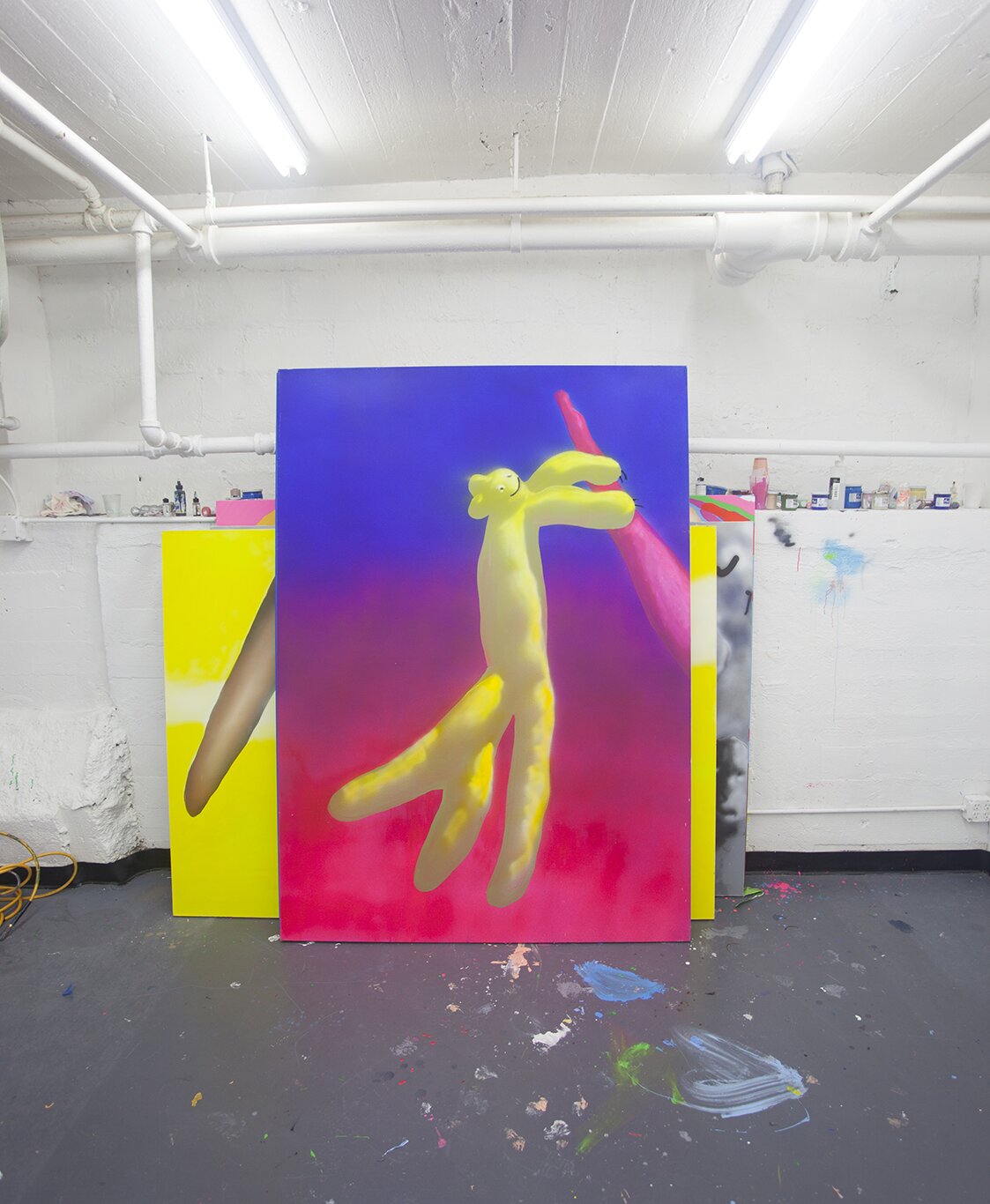
Austin Lee was in the process of getting ready for his two solo shows, at UTA Artist Space in LA and at BANK in Shanghai when we met up with him in his Long Island City studio. We explored topics ranging from living life through screens, his process of translating and moving from a digital space to a physical space and his 3D printed sculptures as he was in the process of creating two distinct bodies of work in tandem for his shows.
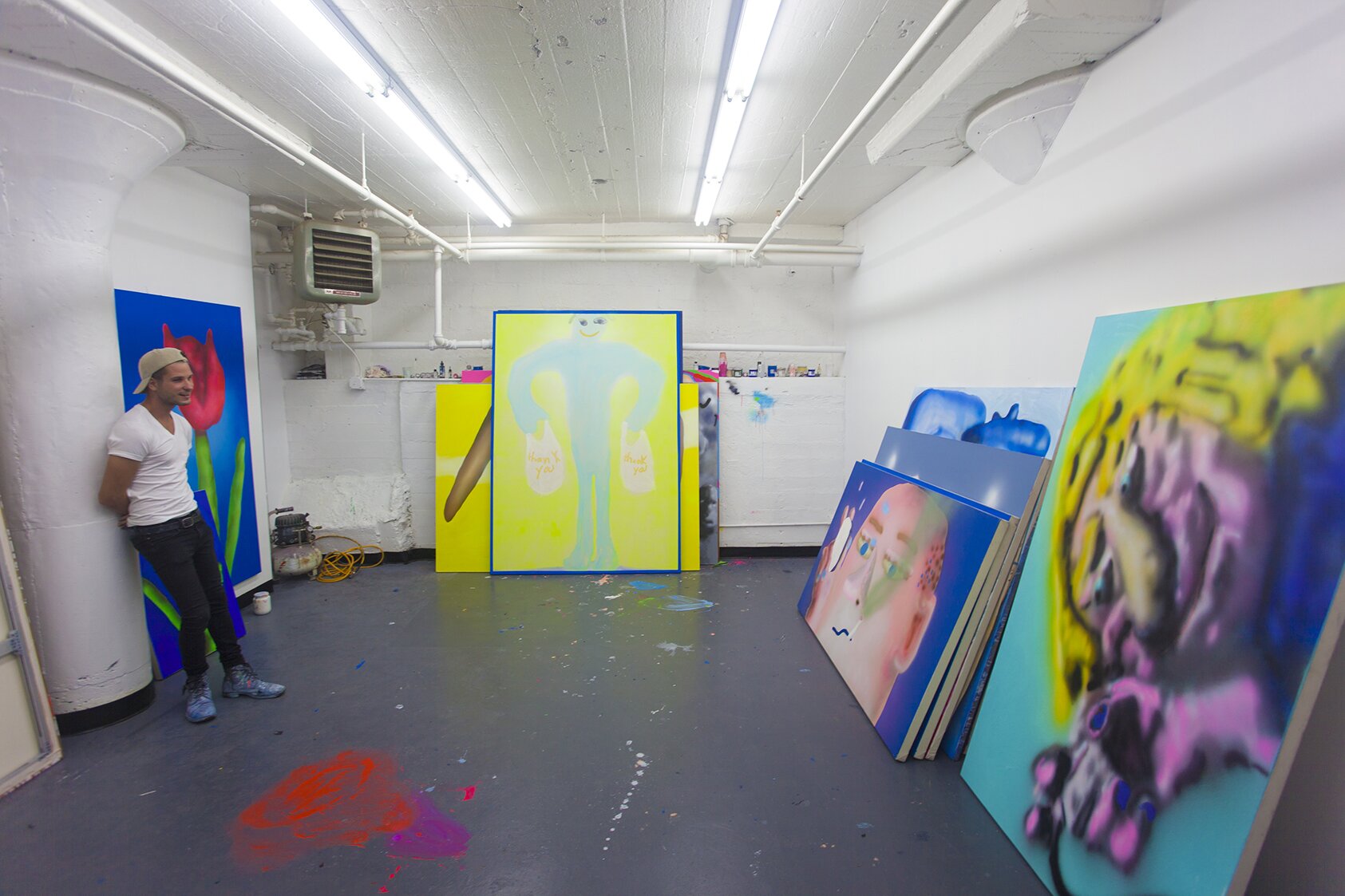
F: Can you start with explaining your process?
A: Idea à Drawing à Painting
or
Drawing à Idea à Painting
Or
Drawing à Painting à Idea
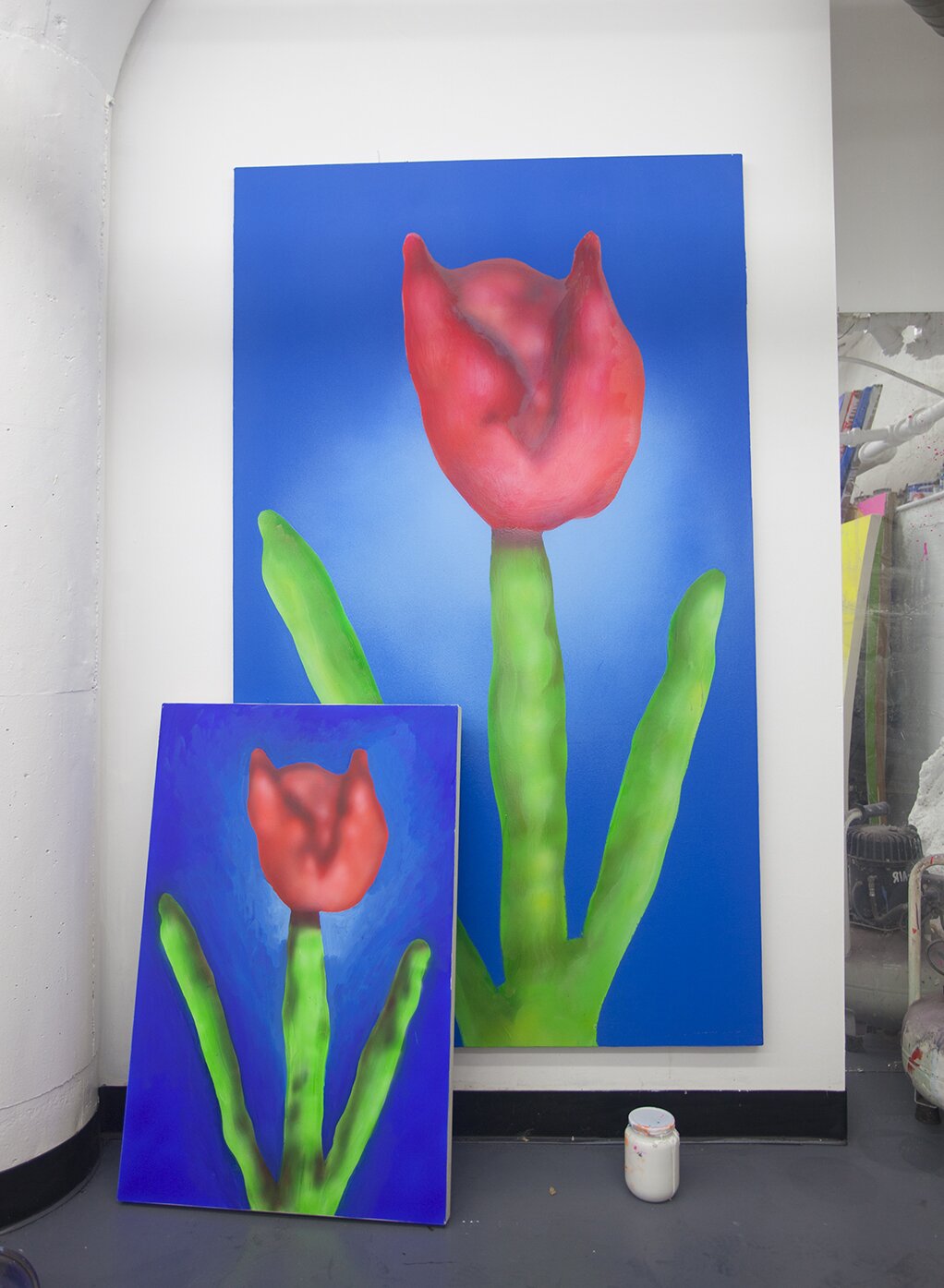
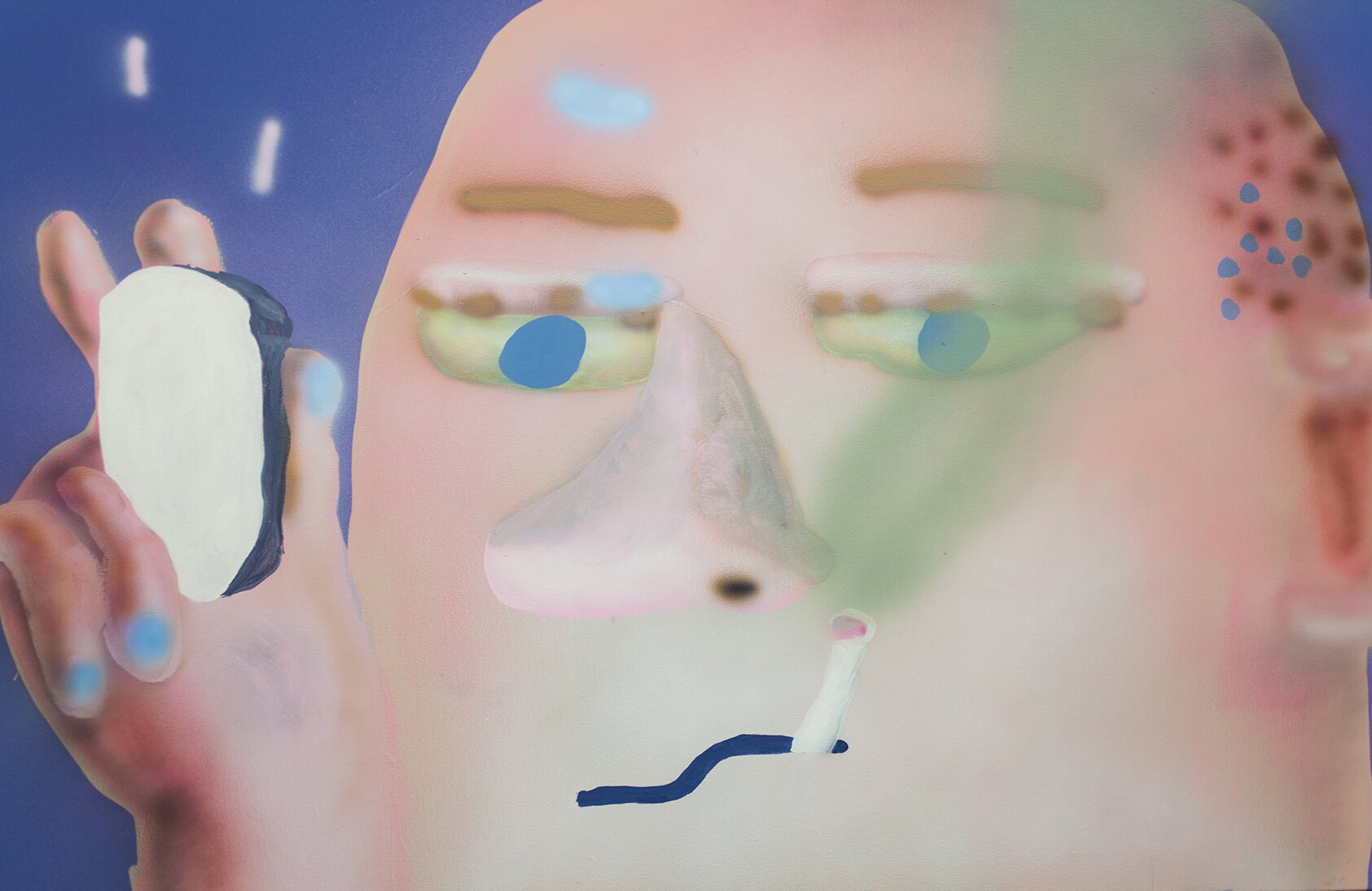
F: Do you figure out all of the colors and composition on the computer and then strictly recreate the image or do you see it as more of as a sketch and a reference to create the image?
A: Best case scenario is both ways of working add something new to the image. I prefer the work to change and grow in ways I didn’t expect. I want to be inspired by the strengths of both mediums. Additive light color on the computer and maybe the texture and surface of paint for example.
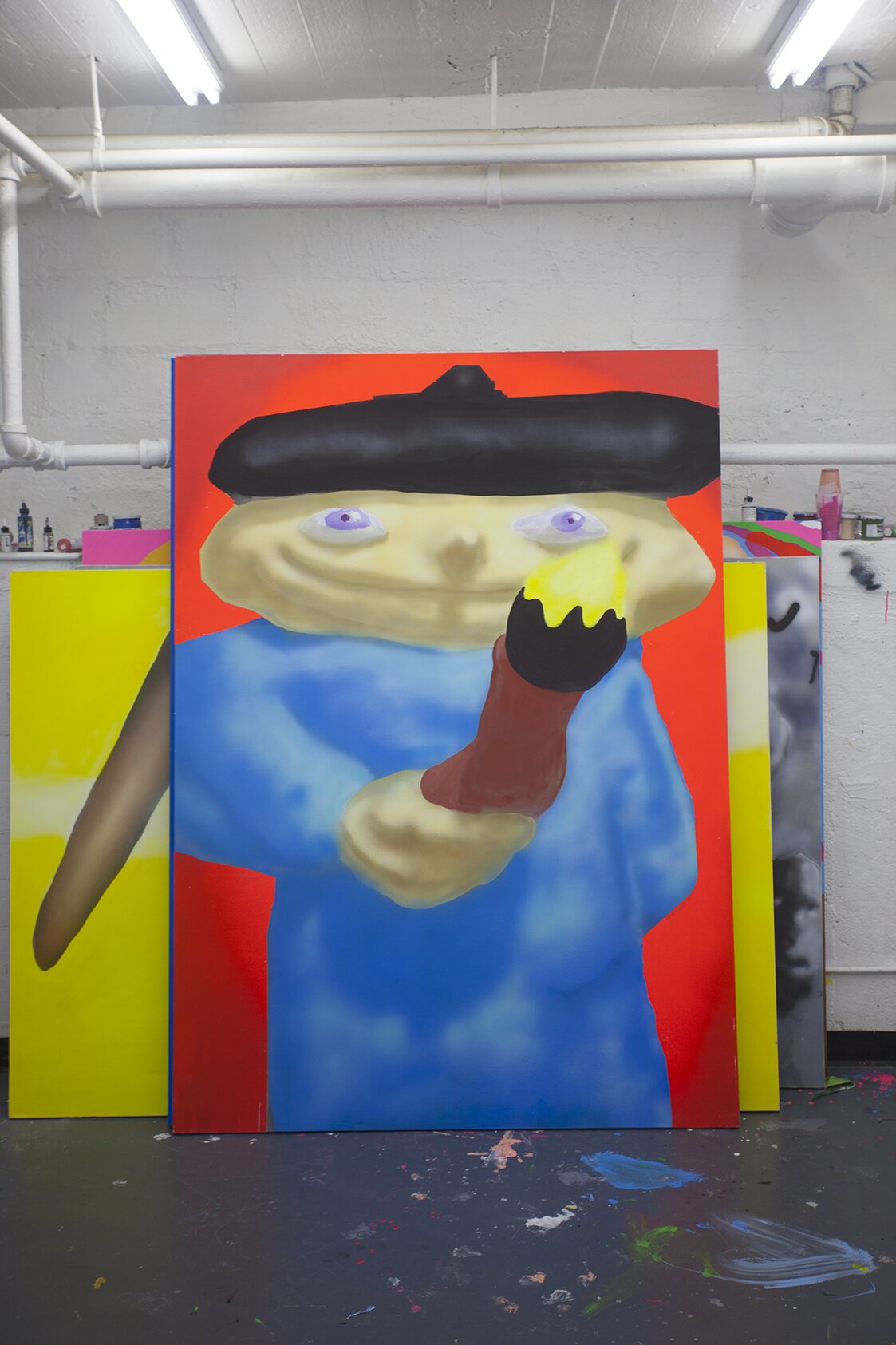
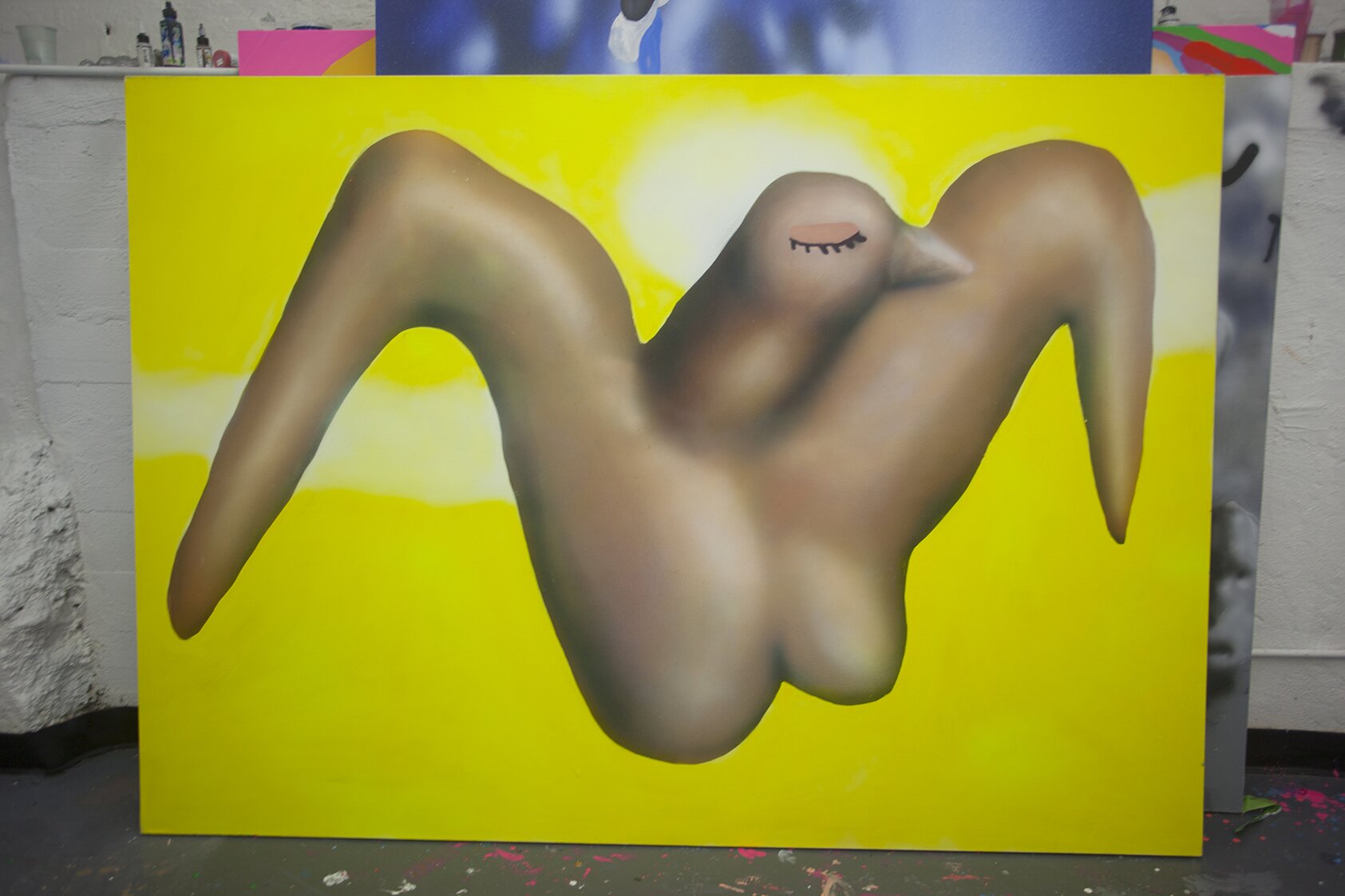
F: There’s a certain amount of immediacy and quickness that comes naturally when working digitally. There is an unhindered effect of always being able to press ‘undo’. Do you find that when working in paint that you carry on that certain speed or you have to slow down the process?
A: I think some of this is a mental condition. The cliché of the blank canvas. I just never have that when working digitally. It’s like an endless sketchbook. I use it as a way to stay experimental and not think too much when drawing. I do the thinking later as I remake the work as a painting. So in that way the work slows down. Every mark suddenly an intentional decision. Do I keep this? What does this mean? For me it’s a balance between being keeping the work direct but also being introspective later.
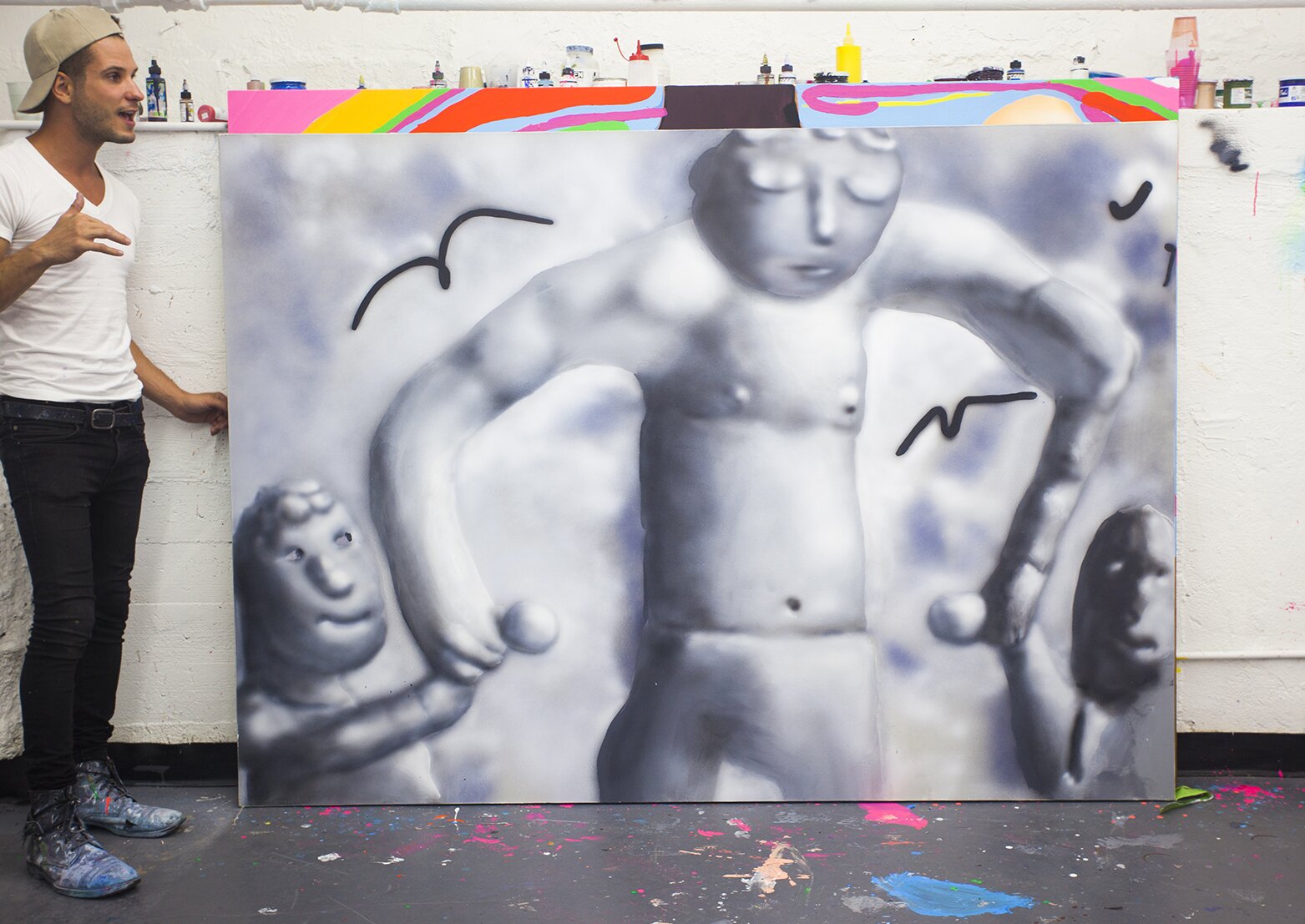
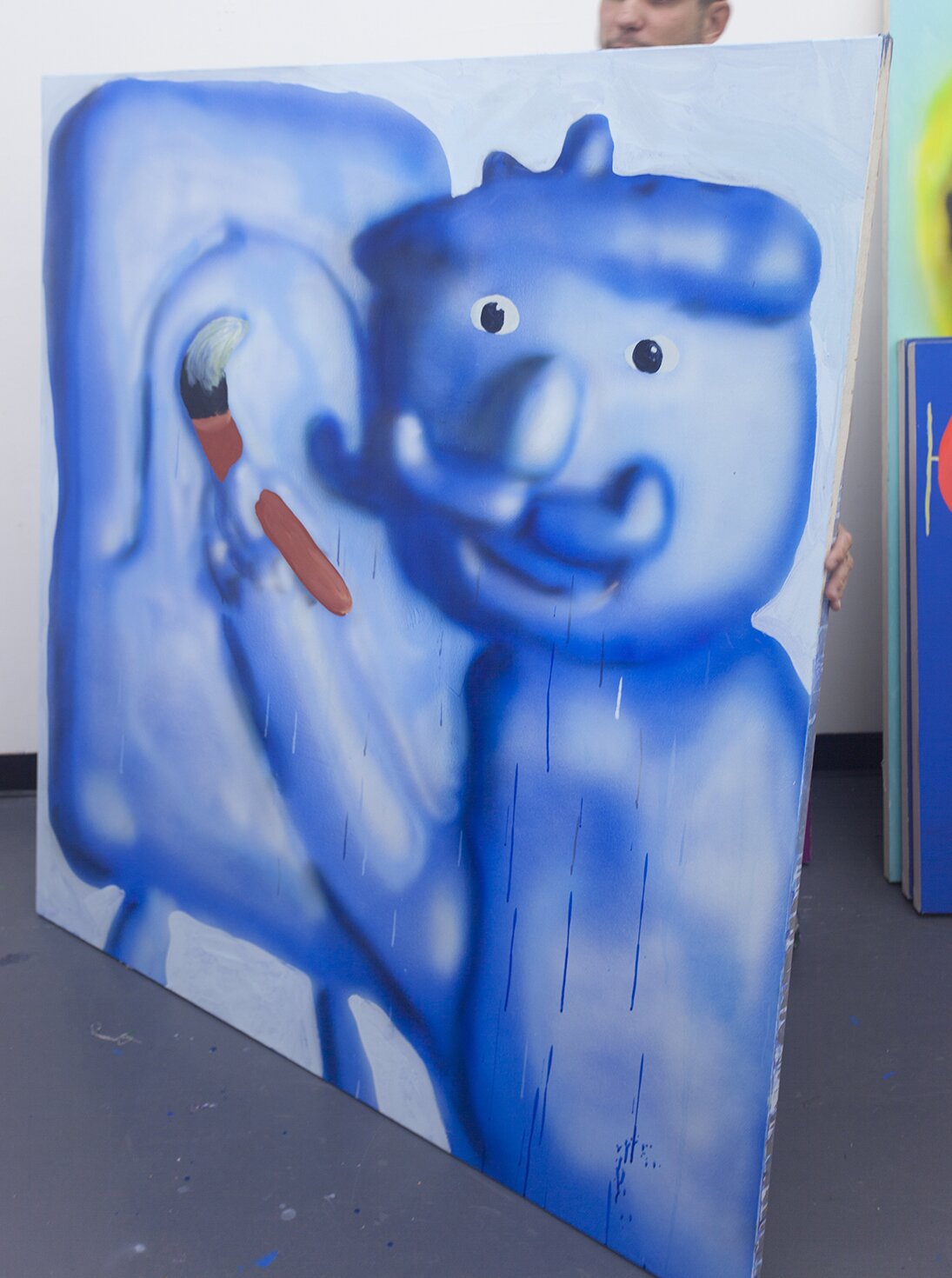
F: Do you see the digital 3D and photoshop work as it’s own work or as a tool or sketch?
A: I see it as a tool for myself. There needs to be a specificity in how the image is presented to someone. Digital displays vary in size and color so much that it is hard to know exactly how someone will experience an image. Some artists take advantage of this and make work that plays with this in an interesting way but I am more interested in creating a specific moment for someone that will persist through time in a way I can anticipate.
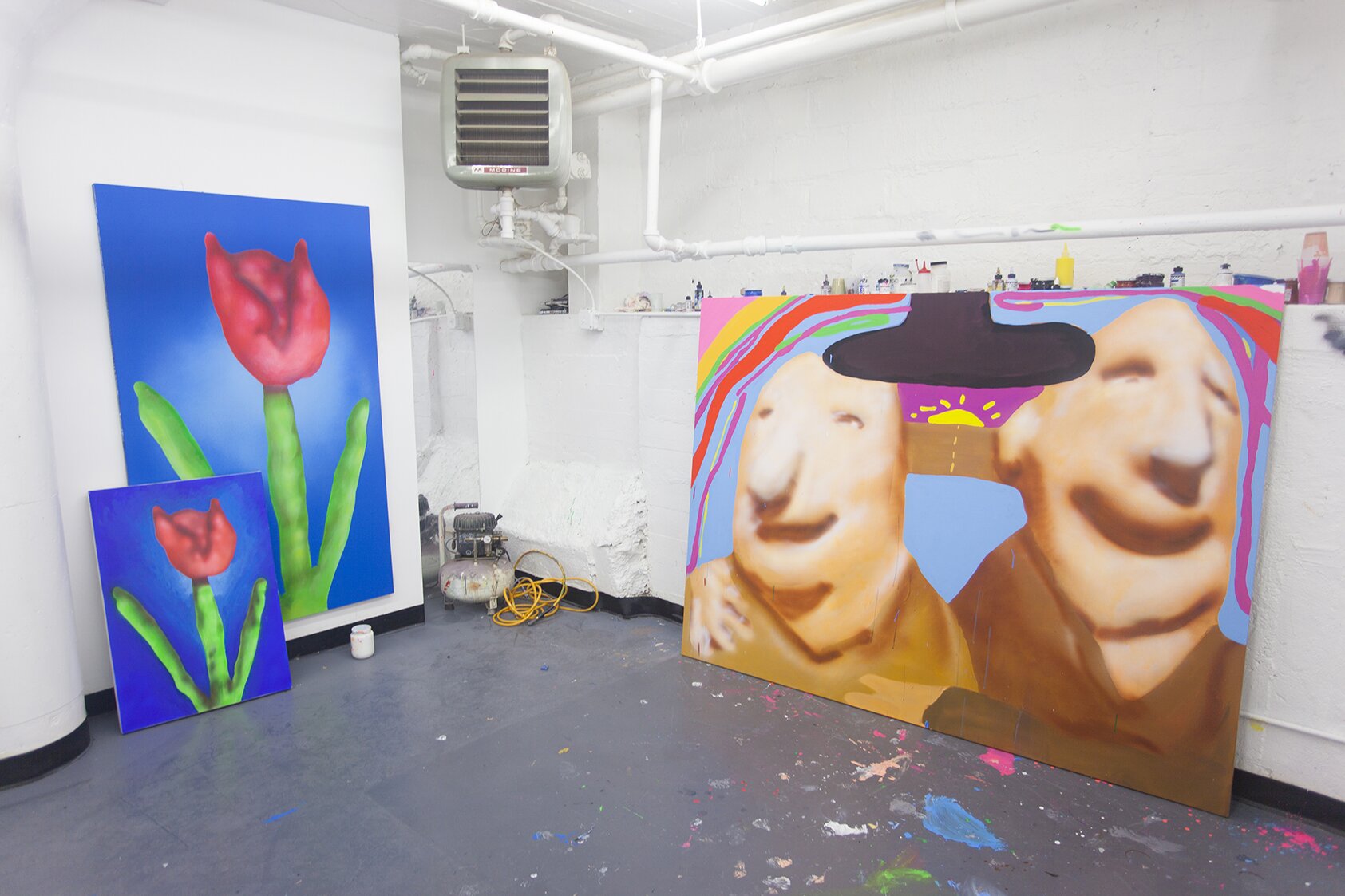
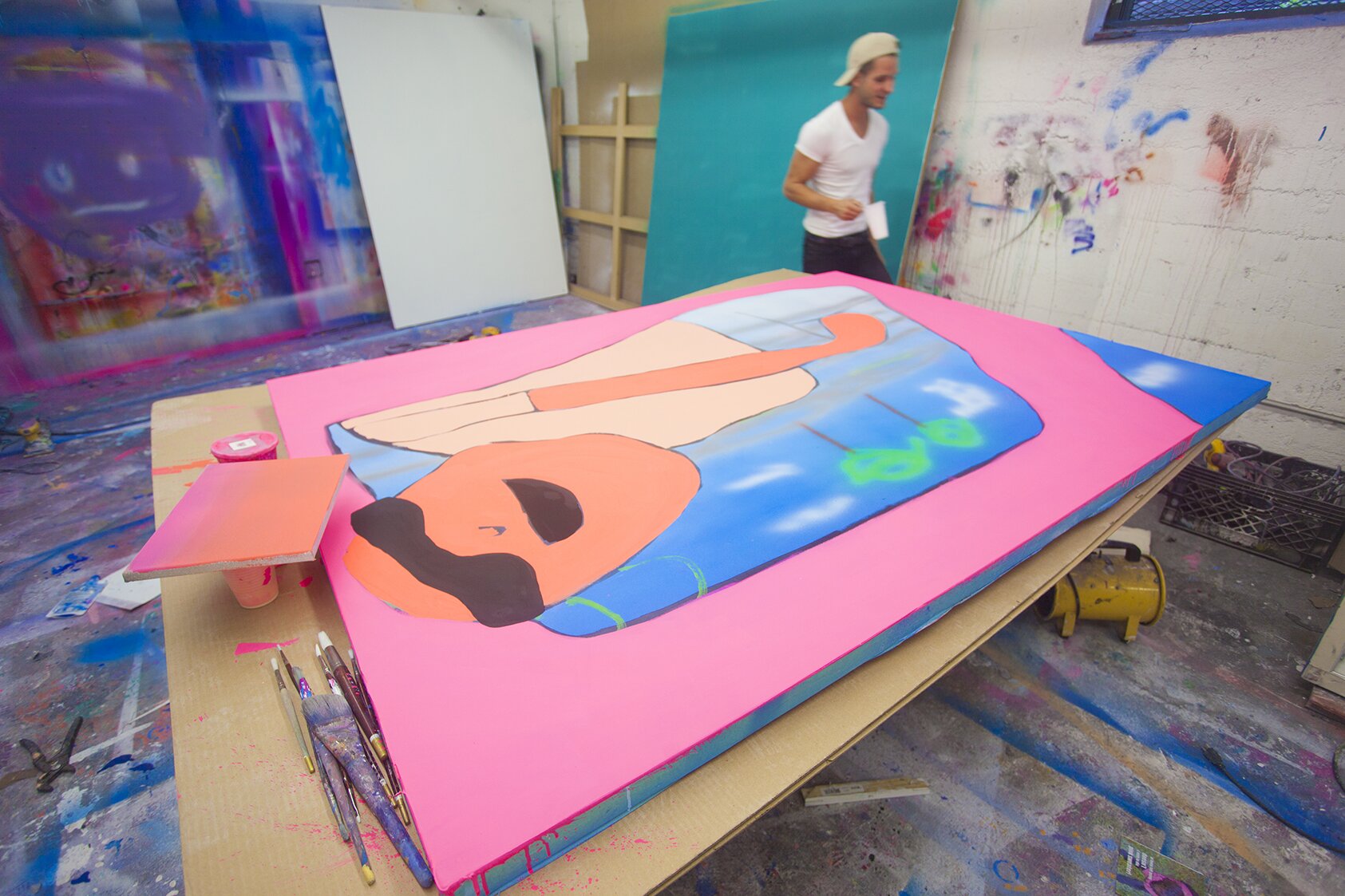
F: What’s the relationship with the 3D printed sculptures and your paintings? Do they come from the same sources?
A: I had been trying to use 3d modeling in my work for about ten years and just couldn’t get it. Everything I would make felt couldn’t overcome the software’s aesthetic. Two summers ago, I had an opportunity to make a stone sculpture in Sweden and spent a few weeks working out ideas there. It was a huge inspiration and everything finally clicked. I then realized I could take the models I was making as sculptures and bring them into 3d modeled environments to experiment even more. I’m still figuring it out and that’s the exciting part.
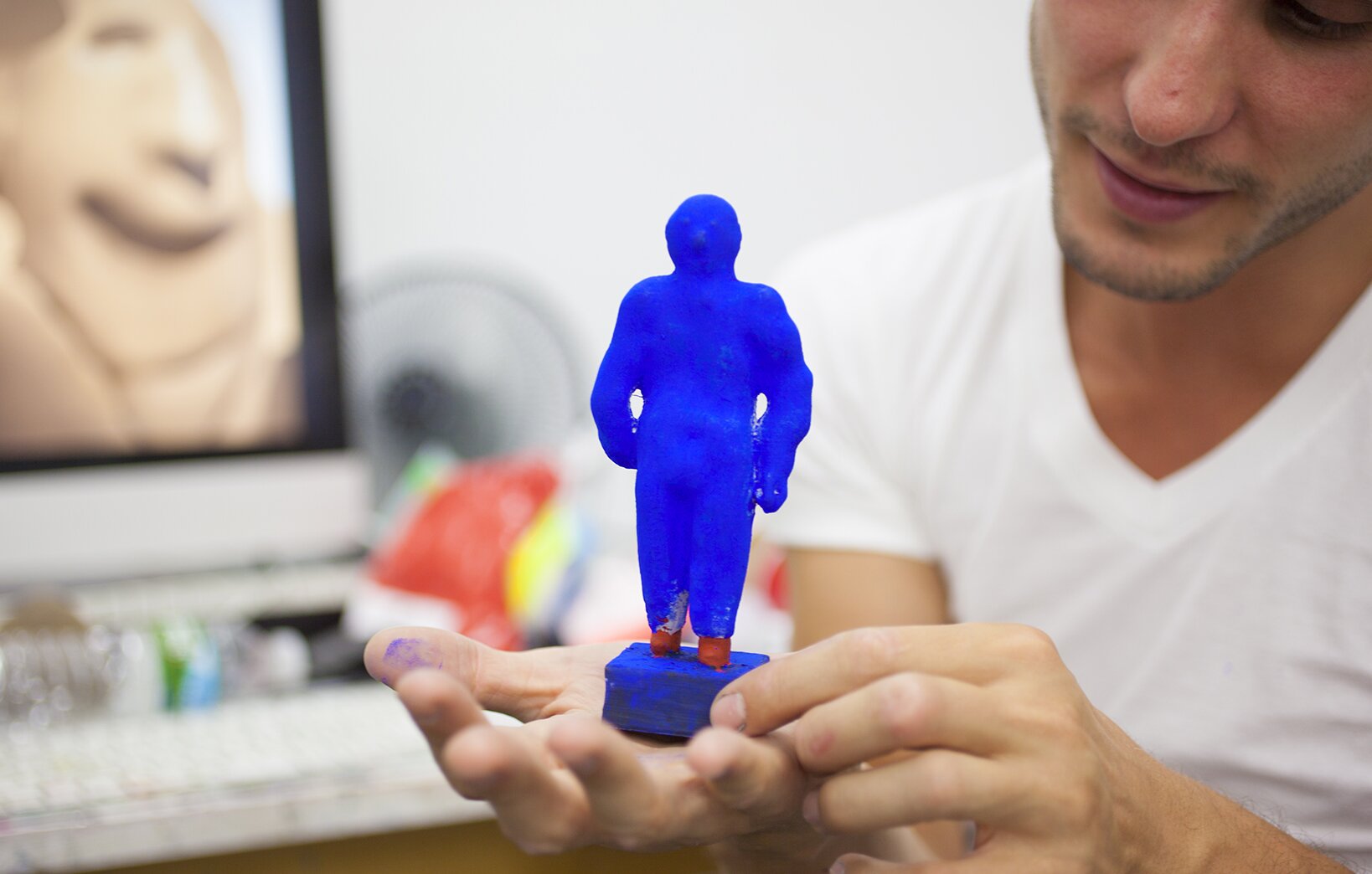
F: How do you choose your colors ?
A:It’s an intuitive process. Color is so rich and complicated that I don’t think you can plan it out until you see it. Colors change so much when they are next to another. An idea you might have doesn’t quite work the way you think it might and you have to be sensitive to what it is doing versus an idea you have.
